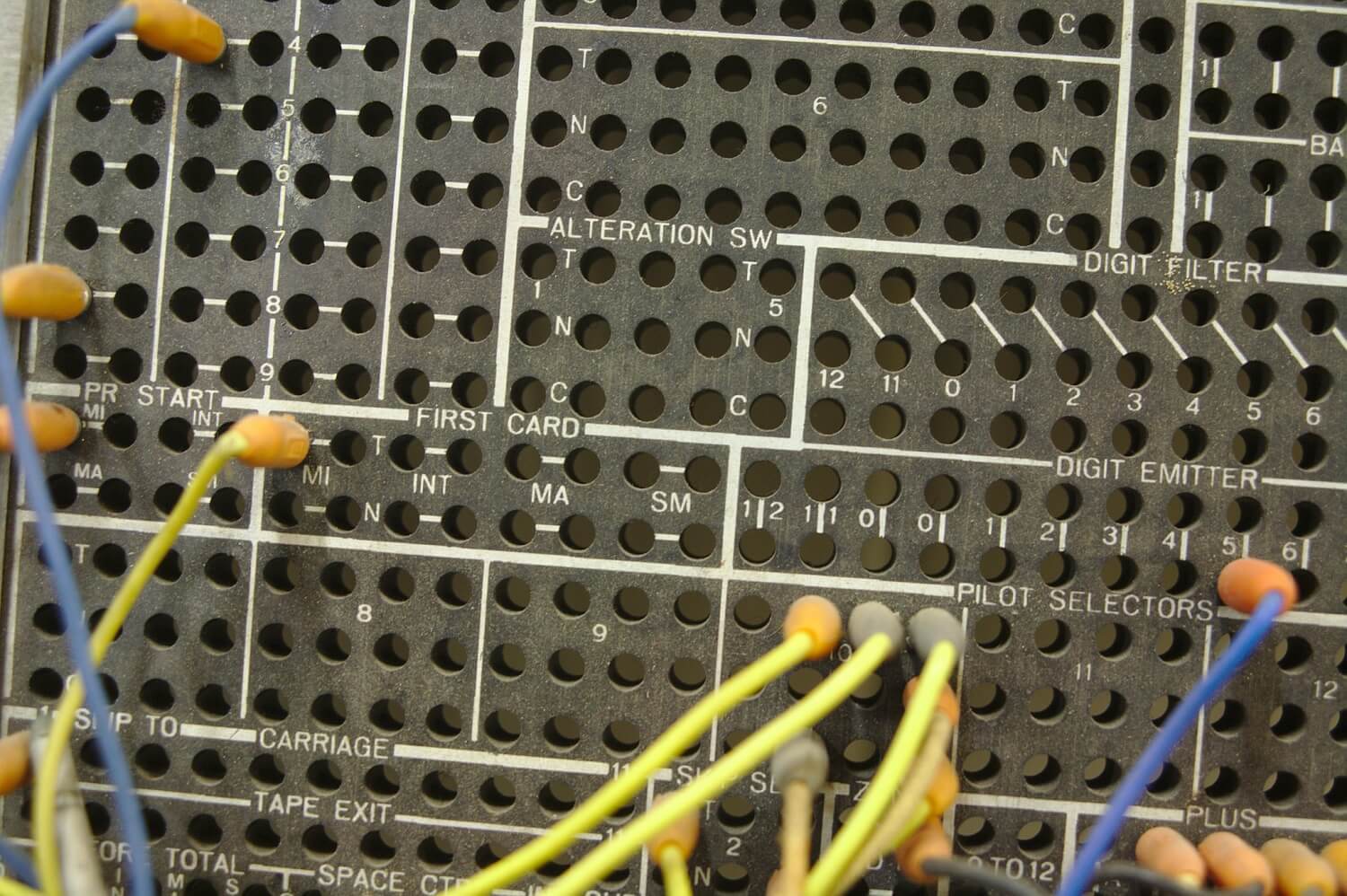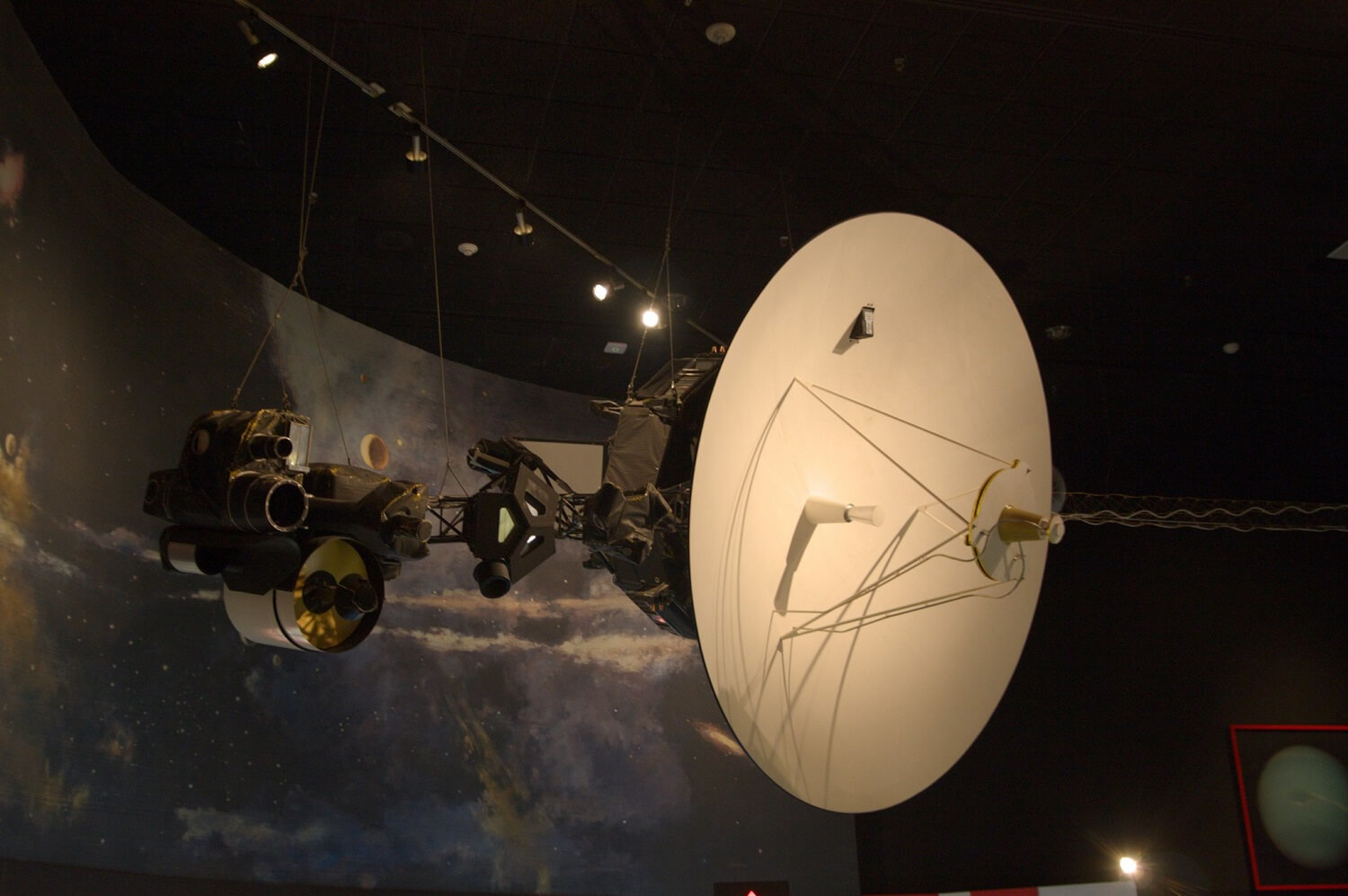"It works - do not touch": the old code and computers that are still functioning
In the modern world, in which a two-year-old smartphone seems to be an outdated technology, it is surprising that many businesses and state-owned companies have been using programs every day that have not been updated for decades.
According to a study conducted by US government agencies, the Secret Service still uses the computer system created in the 1980s. Such "old" solutions are also in service with many countries of the world and are used to control ballistic systems, submarine systems and aircraft.
Therefore, today we would like to tell a few stories about computers and programs, forgotten by time, but not forgotten by stubborn people.
')
 / photo by Judit Klein CC
/ photo by Judit Klein CC
Sparkler Filters in Conroe, Texas has been on the market for a long time and offers filtering devices. And if you place an order for the Nutsch filter from them, they will enter the transaction data into a computer that has been operating since 1948.
This computer is an IBM 402 . Of course, this is not exactly a computer, in the traditional sense, but an automatic electromechanical computer, which can be programmed to print the results depending on the values entered from the 80-column punched cards.
In the middle of the last century, such devices were often used by companies for billing. The machine could take a long list of numbers, stack them, and print a detailed report. In a sense, this is a multi-kilogram Excel spreadsheet. It is for these purposes that Sparkler Filters uses 402, which is the latest fully functioning IBM 402 on the planet.
The machine prints broad paper with leading holes, and Carl Kraklauer (Carl Kracklauer), whose father founded Sparkler Filters in 1927, enters data on punch cards. The company does not switch to “modern” equipment, since 402 is the usual solution. The staff knows how to use the system, and 60 years of company credentials are formatted to work with the device.
 / photo by Simon Claessen CC
/ photo by Simon Claessen CC
Sparkler Filters also have dozens of programs for the IBM 402 in the format of patch panels . To write the program in the 40s, it was necessary to redistribute hundreds of wires to different sockets of the panel. In this case, the panels can be replaced as if they were removable disks with software.
IBM 402 at Sparkler Filters is such a significant computer relic that the Computer History Museum sent a delegation to the company to convince employees to switch to more modern systems and transfer 402 to the museum. Someday it will be a worthy place for the rest of the "old man", but so far the Texas company has decided to postpone the retirement of this dinosaur computing technology.
But not only computing systems live from the middle of the last century. There are long-livers among computer programs. In 1958, the US Department of Defense launched the MOCAS computerized contract management system, which was supposed to keep track of existing contracts and payments. And she follows, 59 years later.
MOCAS is written in COBOL, a language that was not officially approved at the time of writing. Initially, MOCAS worked on punch cards, but over the past decades the interface has been redesigned. At first it became terminal. Then he got a web shell.
Web interfaces often hide the age of old systems. The Ministry of Defense provided MOCAS with a new interface in order to preserve its efficiency in the current realities. In the current version, the system can be integrated with other software packages, for example, the user can attach Microsoft Word documents to records.
The Pentagon is afraid to change this system to a more modern one, since it works with $ 1.3 trillion in bonds and 340 thousand contracts. It runs on the IBM mainframe, which is capable of processing 398 million commands per second, while having a modest 8 gigabytes of RAM and a large number of storage devices.
In May 1977, two large space research missions were launched - the Voyager-2 and Voyager-1 vehicles were launched. Today, both probes continue to send the collected data from those points in space that have not yet been man. Where else have there been artificial devices.
At the end of August 2012, the Voyager-1 sensors recorded a sharp decrease in the concentration of solar wind particles. This meant that Voyager 1 was in interstellar space. In 2013, astronomy professor Bill Webber officially announced that Voyager 1 had gone beyond the solar system.
Both Voyagers are almost identical and use three computers: the flight data processing subsystem, the command processing subsystem, and the angular orientation control and swivel subsystems. Together, they adjust the probe's route, direct the antennas toward the earth, and operate research tools, such as cameras. True, the cameras were turned off and not used since the probe completed its flight past the planets of the Jupiter Group.
After 40 years, the software of the spacecraft is still functioning. Suzy Dodd, project manager for the Voyager program, says the software was updated during the flight, but NASA did not fundamentally change or delete anything.
 / photo by Dusty Reichwein CC
/ photo by Dusty Reichwein CC
The probes have only 70 kilobytes of memory, which is why the program code has to be replaced at various stages of the mission. "For example, this happened 18 times during the passage of Jupiter," - says a researcher of the program Ed Stone (Ed Stone). And once, in 2010, distorted data began to arrive on Earth. The problem turned out to be in one bit, which switched from zero to one — the program was restarted and is still in operation.
NASA expects the maximum lifetime of the probes and software to be 48 years: from 1977 to 2025. By 2020, scientists will turn off some spacecraft systems, but they will still continue their “communication with the Earth” until they send their last message in 2025. At this point, one of the oldest computer programs will cease to function.
Similar stories, when the old program, written several years ago, continues to be actively used, is also found among enthusiastic developers. And this is not surprising, because the smaller the user base of the program, the more likely it is that the code will work “forever” and without changes.
For example, in one of the threads on Hacker News, developers shared their own stories. The user with the nickname Byuu said that the whole community of smwcentral.net uses xkas cross-assembler, which he wrote in 2001.
“I added just a few small patches in early 2004 and released the final version of v06,” says Byuu. - I did not hope that someone would seriously use my decision. I did it for myself, but I put it on the net. ”
According to him, this is a code of 1500 lines without comments and indents. No documentation is attached to it. Each user encounters different bugs that community members learn to “circumvent”. It all turned into a vicious circle - people used xkas because everything was written in xkas.
A little later, enthusiasts began to write their own versions of the assembler, offering backward compatibility for the unobvious solutions of the original program. “I am very ashamed that so many people are stuck in this cycle of mistakes, but I can’t do anything about it,” concludes Byuu.
User buro9 also shared a story. According to him, the oldest code that he wrote, and which still works, is a kind of system for internal use by the recording studio, created in 1997.
“I still get letters asking me how a particular function works,” says buro9. “I have no idea, it was PERL.”
Another of his solutions is project management software, written ten years ago, used by UK banks and some engineering companies. According to the author, it does not have Internet compatibility and has never been updated. Since such organizations manage twenty-year projects, most likely this program will work for at least another ten years.
Perhaps this is the main reason why many systems are still functioning. After all, switching to a new version of the software or changing the platform completely is often impossible - this is too labor-intensive or, on the contrary, it is not worth the effort and money spent.
However, there are people like Sparkler Filters employees with their IBM 402 who follow a simple and well-known rule: "It works - do not touch." Thanks to this, we can observe such amazing solutions that have passed through the years and have not lost their functionality.
PS We suggest to pay attention to some more interesting materials from our blog:
PPS Our fresh digest is all about working with IaaS plus practical case studies .
According to a study conducted by US government agencies, the Secret Service still uses the computer system created in the 1980s. Such "old" solutions are also in service with many countries of the world and are used to control ballistic systems, submarine systems and aircraft.
Therefore, today we would like to tell a few stories about computers and programs, forgotten by time, but not forgotten by stubborn people.
')
 / photo by Judit Klein CC
/ photo by Judit Klein CCThe Last of the Mohicans
Sparkler Filters in Conroe, Texas has been on the market for a long time and offers filtering devices. And if you place an order for the Nutsch filter from them, they will enter the transaction data into a computer that has been operating since 1948.
This computer is an IBM 402 . Of course, this is not exactly a computer, in the traditional sense, but an automatic electromechanical computer, which can be programmed to print the results depending on the values entered from the 80-column punched cards.
In the middle of the last century, such devices were often used by companies for billing. The machine could take a long list of numbers, stack them, and print a detailed report. In a sense, this is a multi-kilogram Excel spreadsheet. It is for these purposes that Sparkler Filters uses 402, which is the latest fully functioning IBM 402 on the planet.
The machine prints broad paper with leading holes, and Carl Kraklauer (Carl Kracklauer), whose father founded Sparkler Filters in 1927, enters data on punch cards. The company does not switch to “modern” equipment, since 402 is the usual solution. The staff knows how to use the system, and 60 years of company credentials are formatted to work with the device.
 / photo by Simon Claessen CC
/ photo by Simon Claessen CCSparkler Filters also have dozens of programs for the IBM 402 in the format of patch panels . To write the program in the 40s, it was necessary to redistribute hundreds of wires to different sockets of the panel. In this case, the panels can be replaced as if they were removable disks with software.
IBM 402 at Sparkler Filters is such a significant computer relic that the Computer History Museum sent a delegation to the company to convince employees to switch to more modern systems and transfer 402 to the museum. Someday it will be a worthy place for the rest of the "old man", but so far the Texas company has decided to postpone the retirement of this dinosaur computing technology.
MOCAS system
But not only computing systems live from the middle of the last century. There are long-livers among computer programs. In 1958, the US Department of Defense launched the MOCAS computerized contract management system, which was supposed to keep track of existing contracts and payments. And she follows, 59 years later.
MOCAS is written in COBOL, a language that was not officially approved at the time of writing. Initially, MOCAS worked on punch cards, but over the past decades the interface has been redesigned. At first it became terminal. Then he got a web shell.
Web interfaces often hide the age of old systems. The Ministry of Defense provided MOCAS with a new interface in order to preserve its efficiency in the current realities. In the current version, the system can be integrated with other software packages, for example, the user can attach Microsoft Word documents to records.
The Pentagon is afraid to change this system to a more modern one, since it works with $ 1.3 trillion in bonds and 340 thousand contracts. It runs on the IBM mainframe, which is capable of processing 398 million commands per second, while having a modest 8 gigabytes of RAM and a large number of storage devices.
Alone in the void
In May 1977, two large space research missions were launched - the Voyager-2 and Voyager-1 vehicles were launched. Today, both probes continue to send the collected data from those points in space that have not yet been man. Where else have there been artificial devices.
At the end of August 2012, the Voyager-1 sensors recorded a sharp decrease in the concentration of solar wind particles. This meant that Voyager 1 was in interstellar space. In 2013, astronomy professor Bill Webber officially announced that Voyager 1 had gone beyond the solar system.
Both Voyagers are almost identical and use three computers: the flight data processing subsystem, the command processing subsystem, and the angular orientation control and swivel subsystems. Together, they adjust the probe's route, direct the antennas toward the earth, and operate research tools, such as cameras. True, the cameras were turned off and not used since the probe completed its flight past the planets of the Jupiter Group.
After 40 years, the software of the spacecraft is still functioning. Suzy Dodd, project manager for the Voyager program, says the software was updated during the flight, but NASA did not fundamentally change or delete anything.
 / photo by Dusty Reichwein CC
/ photo by Dusty Reichwein CCThe probes have only 70 kilobytes of memory, which is why the program code has to be replaced at various stages of the mission. "For example, this happened 18 times during the passage of Jupiter," - says a researcher of the program Ed Stone (Ed Stone). And once, in 2010, distorted data began to arrive on Earth. The problem turned out to be in one bit, which switched from zero to one — the program was restarted and is still in operation.
NASA expects the maximum lifetime of the probes and software to be 48 years: from 1977 to 2025. By 2020, scientists will turn off some spacecraft systems, but they will still continue their “communication with the Earth” until they send their last message in 2025. At this point, one of the oldest computer programs will cease to function.
Public input
Similar stories, when the old program, written several years ago, continues to be actively used, is also found among enthusiastic developers. And this is not surprising, because the smaller the user base of the program, the more likely it is that the code will work “forever” and without changes.
For example, in one of the threads on Hacker News, developers shared their own stories. The user with the nickname Byuu said that the whole community of smwcentral.net uses xkas cross-assembler, which he wrote in 2001.
“I added just a few small patches in early 2004 and released the final version of v06,” says Byuu. - I did not hope that someone would seriously use my decision. I did it for myself, but I put it on the net. ”
According to him, this is a code of 1500 lines without comments and indents. No documentation is attached to it. Each user encounters different bugs that community members learn to “circumvent”. It all turned into a vicious circle - people used xkas because everything was written in xkas.
A little later, enthusiasts began to write their own versions of the assembler, offering backward compatibility for the unobvious solutions of the original program. “I am very ashamed that so many people are stuck in this cycle of mistakes, but I can’t do anything about it,” concludes Byuu.
User buro9 also shared a story. According to him, the oldest code that he wrote, and which still works, is a kind of system for internal use by the recording studio, created in 1997.
“I still get letters asking me how a particular function works,” says buro9. “I have no idea, it was PERL.”
Another of his solutions is project management software, written ten years ago, used by UK banks and some engineering companies. According to the author, it does not have Internet compatibility and has never been updated. Since such organizations manage twenty-year projects, most likely this program will work for at least another ten years.
Perhaps this is the main reason why many systems are still functioning. After all, switching to a new version of the software or changing the platform completely is often impossible - this is too labor-intensive or, on the contrary, it is not worth the effort and money spent.
However, there are people like Sparkler Filters employees with their IBM 402 who follow a simple and well-known rule: "It works - do not touch." Thanks to this, we can observe such amazing solutions that have passed through the years and have not lost their functionality.
PS We suggest to pay attention to some more interesting materials from our blog:
- Game industry: how IaaS gave a new life to the popular game Angry Birds
- High technology in the world of sports: why the cloud will become the standard of the future
- Comparison of four top disaster recovery solutions
- Cloud services: experience of using IaaS by Russian companies
- Rent a virtual server or rent a virtual data center?
PPS Our fresh digest is all about working with IaaS plus practical case studies .
Source: https://habr.com/ru/post/319620/
All Articles